Polyurethane Hose for Dynamic Piping and Automation Systems: A Technical Overview
Introduction
In the fast-evolving landscape of industrial automation, fluid conveyance, and pneumatic systems, the demand for high-performance, flexible, and durable components is paramount. The polyurethane (PU) hose, specifically engineered for applications requiring extreme flexibility and reliable performance, stands out as a critical solution for dynamic piping and automation systems. Manufactured from high-grade polyurethane, this hose combines exceptional resistance to internal pressure, vibration, corrosion, heat, chemicals, and oils with low moisture uptake and minimal dimensional change over time. Its lightweight design, outstanding flexural fatigue resistance, and weather durability make it ideal for applications involving repeated bending and dynamic connections.
The PU hose is available in a variety of sizes, such as JP-4X2 (Ø4 mm / ID 2 mm) to JP-16X12 (Ø16 mm / ID 12 mm), and colors, including transparent, blue, red, green, black, and milky (opal), to facilitate line identification. With a recommended operating temperature range of -20°C to 80°C, it is well-suited for pneumatic lines, fluid transfer, and other industrial applications where flexibility, durability, and chemical resistance are essential. This article provides a comprehensive technical analysis of the PU hose, exploring its specifications, materials, key features, applications, comparisons, benefits, limitations, and maintenance guidelines. Designed for engineers, system designers, and technical professionals, this guide aims to deliver actionable insights for integrating this versatile hose into demanding industrial environments.
As industries increasingly adopt automation and smart manufacturing, components like the PU hose play a pivotal role in ensuring system efficiency, reliability, and longevity. Its ability to withstand harsh operating conditions while maintaining flexibility positions it as a cornerstone in applications ranging from robotics to chemical processing. By examining its technical attributes and practical use cases, this article underscores why the PU hose is a preferred choice for modern industrial systems.
Technical Overview
The polyurethane hose is a high-performance tubing solution designed for dynamic applications where flexibility, durability, and chemical resistance are critical. Constructed from thermoplastic polyurethane (TPU), it exhibits a unique combination of elastomeric flexibility and mechanical strength, enabling it to handle pressures up to 10 bar (145 psi) at 23°C while maintaining structural integrity under repeated flexing. The hose’s molecular structure, characterized by alternating hard and soft segments, provides excellent elasticity and resistance to abrasion, making it ideal for environments involving constant motion or vibration.
Functionally, the PU hose serves as a conduit for compressed air, gases, liquids, and certain chemicals in pneumatic and fluid conveyance systems. Its smooth inner surface minimizes friction losses, ensuring efficient flow with minimal pressure drop—typically less than 0.1 bar/m for air at 6 bar. The hose’s low moisture absorption (less than 0.5% by weight) prevents swelling or degradation in humid conditions, while its dimensional stability ensures consistent performance over time.
The hose is manufactured using extrusion processes, ensuring uniform wall thickness (e.g., 1 mm for JP-4X2, 2 mm for JP-16X12) and precise outer/inner diameter ratios. This precision is critical for compatibility with standard push-to-connect fittings, barbed connectors, and compression fittings used in automation systems. The PU hose’s flexibility, with a minimum bend radius as low as 10 mm for smaller sizes, allows it to navigate tight spaces without kinking, a common issue in less elastic materials like PVC or nylon.
From a thermal perspective, the hose operates reliably between -20°C and 80°C, with short-term excursions up to 100°C without permanent deformation. Its chemical resistance extends to oils, greases, dilute acids, and alkalis, making it suitable for industries like automotive, manufacturing, and food processing (when using food-grade variants). Electrically, the PU hose is non-conductive, with a dielectric strength of approximately 20 kV/mm, reducing risks in systems with electrical components.
The hose’s lightweight nature—approximately 20 g/m for JP-4X2 and 120 g/m for JP-16X12—enhances handling and reduces fatigue during installation. Its availability in multiple colors aids in system organization, preventing cross-connection errors in complex setups. Overall, the PU hose’s technical design addresses the core needs of dynamic piping systems, balancing flexibility, durability, and compatibility.
Specifications and Dimensions
The PU hose is available in a range of sizes to meet diverse application requirements, with precise outer and inner diameters ensuring compatibility with standard fittings. Below is a detailed table of key specifications and dimensions for common product codes.
| Product Code | Outer Diameter (mm) | Inner Diameter (mm) | Wall Thickness (mm) | Weight (g/m) | Minimum Bend Radius (mm) | Working Pressure at 23°C (bar) | Burst Pressure at 23°C (bar) |
|---|---|---|---|---|---|---|---|
| JP-4X2 | 4.0 | 2.0 | 1.0 | 20 | 10 | 10 | 30 |
| JP-6X4 | 6.0 | 4.0 | 1.0 | 30 | 15 | 10 | 30 |
| JP-8X5 | 8.0 | 5.0 | 1.5 | 50 | 20 | 10 | 28 |
| JP-10X6.5 | 10.0 | 6.5 | 1.75 | 70 | 25 | 9 | 27 |
| JP-12X8 | 12.0 | 8.0 | 2.0 | 90 | 30 | 8 | 24 |
| JP-16X12 | 16.0 | 12.0 | 2.0 | 120 | 40 | 7 | 21 |
| JP-1X4 (1/4″) | 6.35 | 4.57 | 0.89 | 25 | 12 | 10 | 30 |
| JP-3/8 | 9.53 | 6.99 | 1.27 | 55 | 22 | 9 | 27 |
| JP-1/2 | 12.70 | 9.56 | 1.57 | 80 | 28 | 8 | 24 |
Additional Specifications:
- Operating Temperature Range: -20°C to 80°C
- Material: High-grade thermoplastic polyurethane (TPU)
- Colors: Transparent, milky (opal), blue, red, green, black
- Length per Coil: Standard 100 m, custom lengths available
- Pressure Derating: 50% at 60°C, 70% at 80°C
- Compliance: RoHS, REACH; food-grade variants meet FDA 21 CFR 177.2600
These specifications ensure the PU hose meets the demands of various systems, with smaller sizes (e.g., JP-4X2) suited for precision pneumatics and larger sizes (e.g., JP-16X12) ideal for high-flow applications. The consistent wall thickness and lightweight design facilitate easy integration into existing setups.
Materials and Build Quality
The PU hose is crafted from high-quality thermoplastic polyurethane (TPU), a polymer known for its elasticity, toughness, and chemical resistance. The TPU used in the hose is a polyester-based grade, offering a Shore A hardness of 85-90, which balances flexibility with structural integrity. This material provides a tensile strength of approximately 40 MPa and an elongation at break of 500%, enabling the hose to withstand repeated stretching and bending without cracking.
The hose’s abrasion resistance, measured at less than 30 mg per DIN ISO 4649, ensures durability in environments with mechanical wear, such as robotic arms or conveyor systems. Its low moisture uptake (<0.5% by weight) prevents hydrolysis, a common issue in humid conditions, ensuring dimensional stability with less than 1% change in diameter or length over time.
Chemically, the PU hose resists oils (e.g., ASTM Oil No. 1), greases, and dilute acids/alkalis (pH 4-10), with no degradation after 168 hours of exposure at 23°C. Its weather resistance, tested per ISO 4892-2, shows minimal yellowing or loss of mechanical properties after 1,000 hours of UV exposure, making it suitable for outdoor applications.
The manufacturing process employs precision extrusion with automated quality control, ensuring wall thickness uniformity within ±0.05 mm. The smooth inner surface, with a roughness average (Ra) of less than 0.4 μm, minimizes flow resistance and prevents particle buildup in fluid applications. The hose is free of plasticizers, reducing the risk of leaching, and complies with RoHS and REACH regulations for environmental safety.
For enhanced durability, the hose undergoes rigorous testing, including:
- Flexural Fatigue: Over 1 million cycles at minimum bend radius without failure.
- Pressure Testing: Burst pressure exceeds 3x working pressure at 23°C.
- Thermal Cycling: No cracking or deformation after 500 cycles between -20°C and 80°C.
This robust material and build quality ensure the PU hose delivers long-term performance, with a projected service life of 10-15 years in typical industrial conditions.
Key Features
Extreme Flexibility
- Minimum bend radius as low as 10 mm allows tight routing without kinking, ideal for compact automation systems.
High Pressure and Chemical Resistance
- Handles up to 10 bar at 23°C and resists oils, acids, and alkalis, ensuring reliability in harsh environments.
Lightweight Design
- Weights ranging from 20 g/m to 120 g/m reduce installation fatigue and system load, enhancing efficiency.
Color-Coded Options
- Available in transparent, blue, red, green, black, and milky (opal) for easy line identification in complex setups.
Low Moisture Uptake
- Less than 0.5% moisture absorption prevents swelling or degradation, maintaining performance in humid conditions.
Weather and UV Resistance
- Maintains mechanical properties after prolonged UV exposure, suitable for outdoor and exposed applications.
Compatibility with Standard Fittings
- Precise dimensions ensure seamless integration with push-to-connect, barbed, or compression fittings.
Long-Term Durability
- Flexural fatigue resistance and minimal dimensional change support a service life exceeding 10 years.
These features make the PU hose a versatile and reliable choice for dynamic applications, offering technical advantages in flexibility, durability, and system integration.
Use Cases / Applications
The PU hose’s versatility supports a wide range of industrial and commercial applications, leveraging its flexibility and durability.
- Pneumatic Systems: Used in automation for air supply to actuators, grippers, and valves in robotics and assembly lines. The JP-4X2 and JP-6X4 sizes are ideal for precision pneumatics in semiconductor manufacturing, delivering consistent pressure with minimal leakage.
- Fluid Conveyance: Transports water, oils, and non-corrosive chemicals in processing plants. Food-grade variants are used in beverage dispensing, meeting FDA standards. The JP-12X8 size handles higher flow rates in chemical dosing systems.
- Automotive Manufacturing: Powers pneumatic tools and robotic arms in assembly lines. The hose’s flexibility and abrasion resistance suit dynamic connections, with blue/red colors aiding system organization.
- Medical and Laboratory Equipment: Supplies compressed air or gases in medical devices like ventilators or analytical instruments. Transparent hoses allow visual monitoring of fluid flow, critical in diagnostics.
- Agricultural Automation: Used in irrigation controllers and greenhouse automation for air or water delivery. UV resistance ensures durability in outdoor setups.
- Marine and Outdoor Applications: Resists saltwater corrosion and UV exposure in marine pneumatic systems or portable equipment, with JP-8X5 offering a balance of flow and flexibility.
- Construction and Mining: Powers pneumatic drills and tools in harsh environments, with larger sizes (e.g., JP-16X12) supporting high-volume air delivery.
In all cases, engineers can calculate flow rates using the Hagen-Poiseuille equation for liquids or Darcy-Weisbach for gases, ensuring optimal sizing. The hose’s compatibility with IoT sensors allows real-time pressure monitoring, enhancing system reliability.
Comparison
Below is a comparison of the PU hose with nylon and PVC hoses, common alternatives in dynamic applications.
| Feature | PU Hose (JP-Series) | Nylon Hose | PVC Hose |
|---|---|---|---|
| Flexibility (Bend Radius) | 10-40 mm | 20-60 mm | 30-80 mm |
| Working Pressure (bar) | 7-10 | 10-15 | 5-8 |
| Chemical Resistance | Oils, acids, alkalis | Limited | Moderate |
| Weight (g/m, Ø8 mm) | 50 | 60 | 70 |
| UV Resistance | Excellent | Moderate | Poor |
| Moisture Uptake | <0.5% | 1-2% | 0.8-1.5% |
| Abrasion Resistance | High | Moderate | Low |
| Cost per Meter ($) | 1.5-3.0 | 1.0-2.5 | 0.8-2.0 |
The PU hose excels in flexibility and chemical resistance, outperforming PVC in durability and nylon in dynamic applications. While nylon supports higher pressures, its stiffness limits use in tight spaces. PVC is cheaper but lacks UV and abrasion resistance, reducing lifespan in harsh conditions.
Benefits and Limitations
Benefits:
- Superior Flexibility: Enables complex routing in automation, reducing system footprint.
- Chemical and Environmental Resistance: Extends service life in corrosive or outdoor settings.
- Lightweight and Easy Installation: Reduces labor costs and system weight.
- Color Coding: Simplifies maintenance and reduces errors in multi-line systems.
- Low Maintenance: Minimal degradation ensures consistent performance, lowering O&M costs.
Limitations:
- Pressure Limits: Maximum 10 bar at 23°C, less than nylon in high-pressure applications.
- Cost: Higher than PVC, potentially impacting budget-constrained projects.
- Temperature Constraints: Limited to 80°C continuous use, unsuitable for extreme heat applications.
- Opaque Colors: Non-transparent options hinder visual flow inspection.
The benefits outweigh limitations for most dynamic applications, with technical advantages driving efficiency and reliability.
Maintenance or Care Guide
To maximize the PU hose’s lifespan:
- Inspection: Check monthly for abrasions, cuts, or kinks. Replace if damage exceeds 10% of wall thickness.
- Cleaning: Use mild soap and water for external cleaning; avoid solvents that degrade TPU.
- Pressure Monitoring: Use gauges to ensure operation within rated limits, preventing overpressure.
- Storage: Store coils flat in dry, shaded areas below 30°C to prevent deformation.
- Fitting Checks: Tighten fittings to 2-3 Nm every 6 months to prevent leaks.
- UV Protection: For outdoor use, apply UV-resistant wraps if prolonged exposure exceeds 2 years.
Regular maintenance ensures a service life of 10-15 years, with minimal performance degradation.
Conclusion
The polyurethane hose, with its exceptional flexibility, durability, and chemical resistance, is a vital component for dynamic piping and automation systems. Its technical specifications, robust materials, and versatile applications make it a preferred choice across industries, from manufacturing to agriculture. By offering a balance of performance and cost-effectiveness, the PU hose drives efficiency and reliability, contributing to the advancement of modern industrial systems. As automation and sustainability demands grow, this hose stands as a testament to innovative engineering in fluid and pneumatic solutions.

 Tiếng Việt
Tiếng Việt
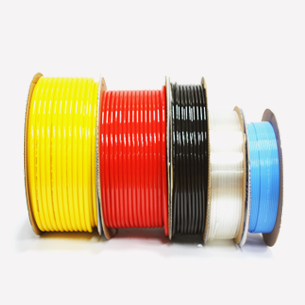
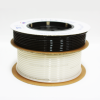
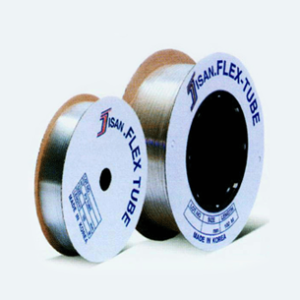
![폴리우레탄연질호스 [PU Soft Hose]](https://yongshan.asia/wp-content/uploads/2025/09/6_3f56f14307e6c553a5d230d14dc10d78-300x300.png)
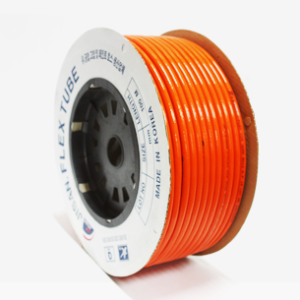
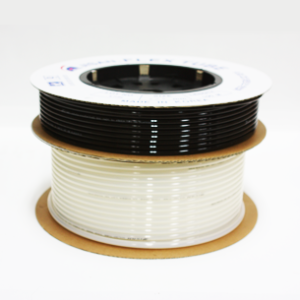
Reviews
There are no reviews yet.